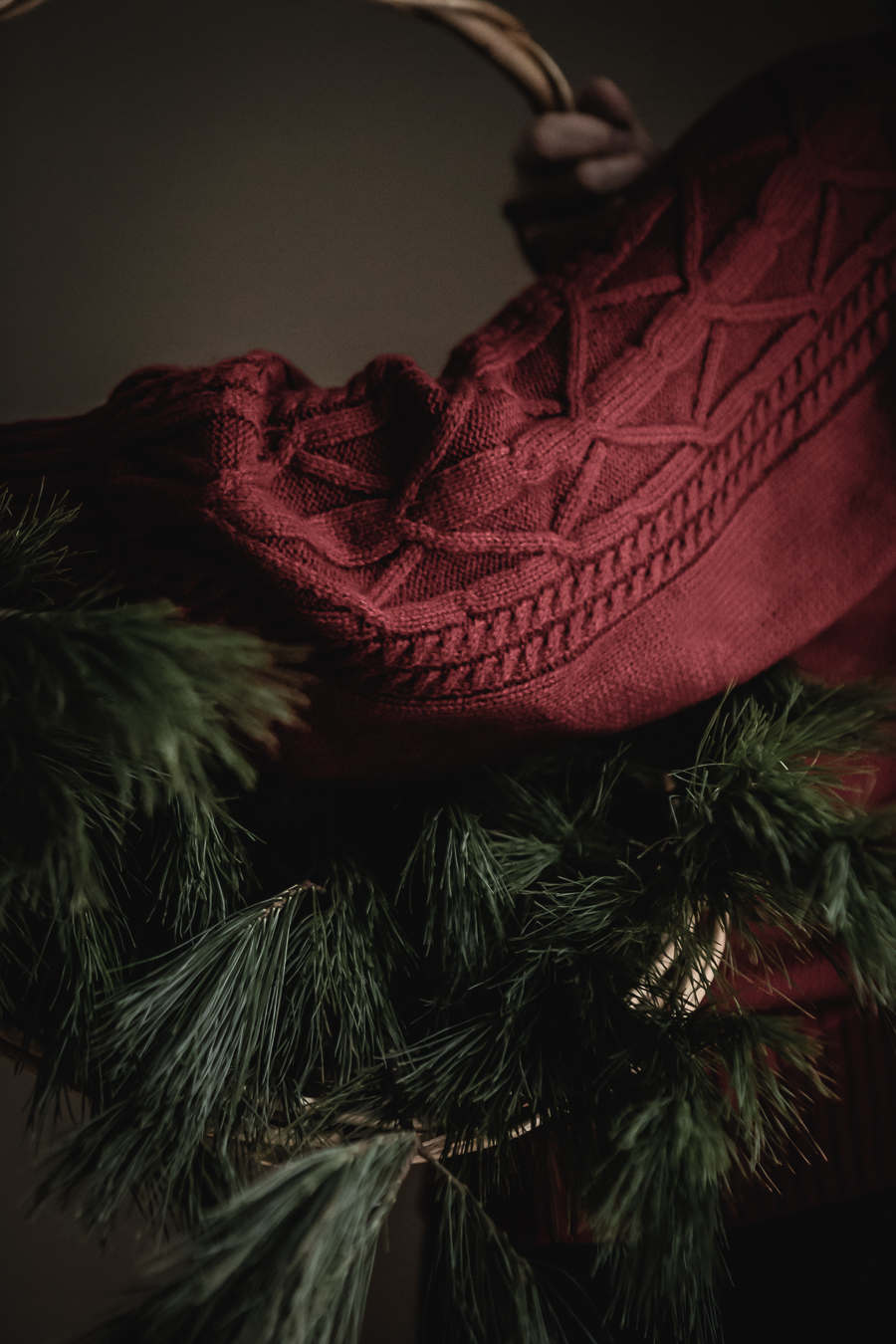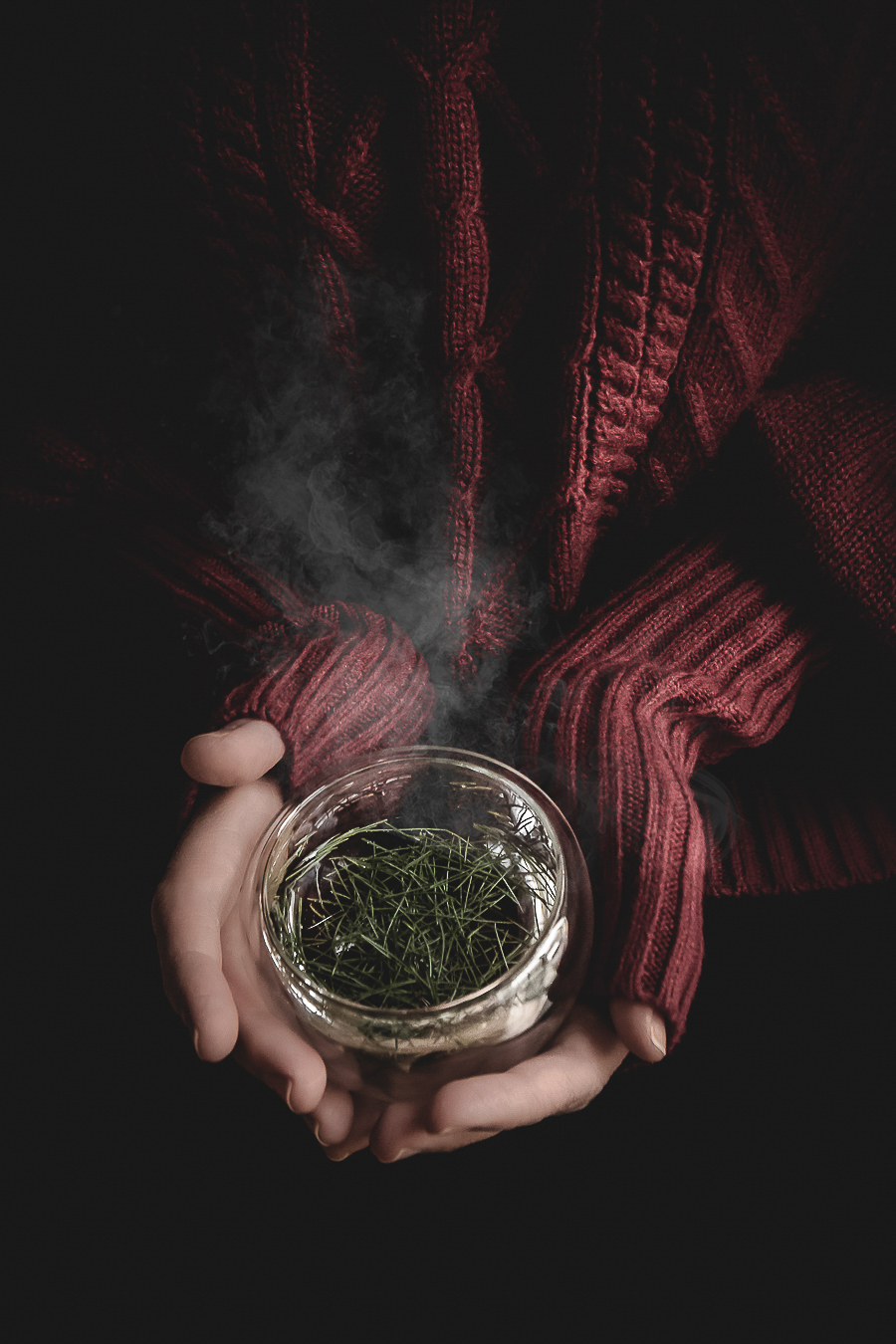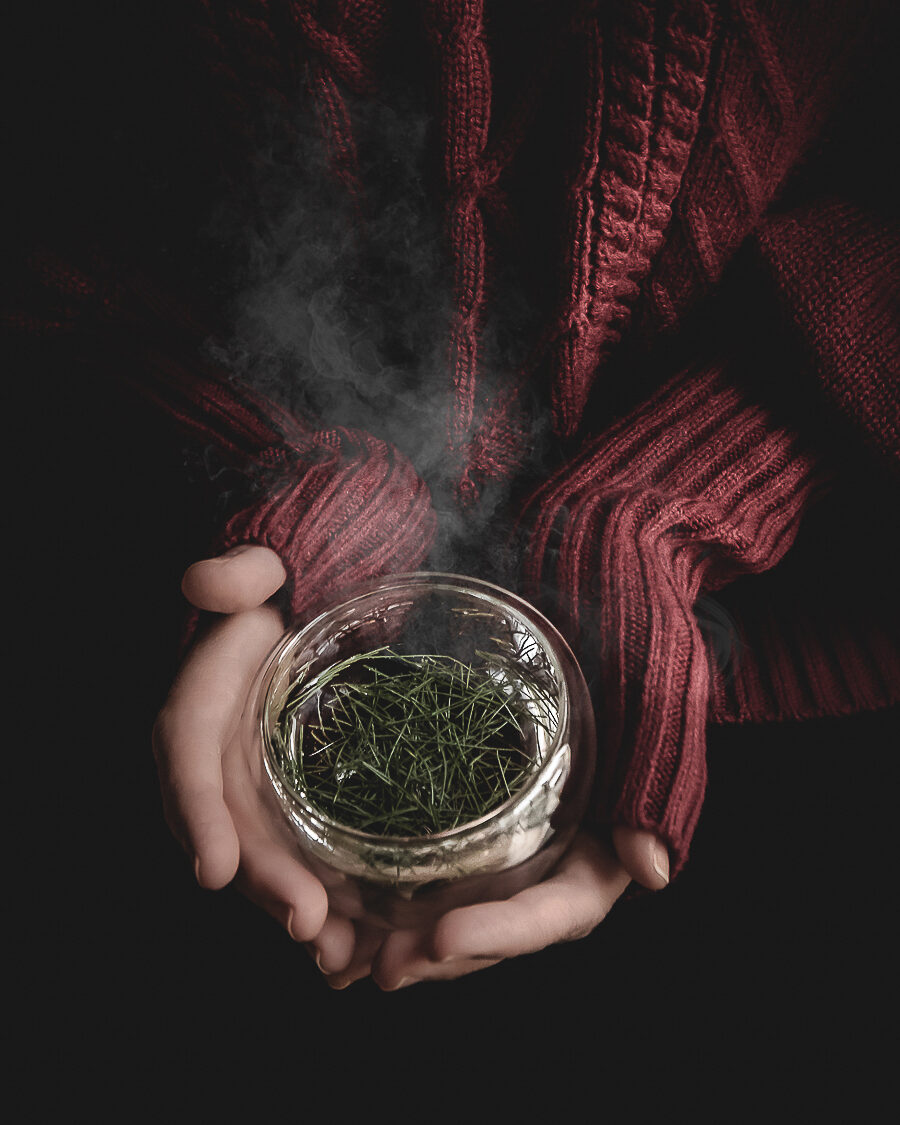Winter arrives and the slumbering fields lie waiting under blankets of frost and ice. Branches scrape bare against the gray winter sky. Foraging in the wild is scarce until springtime. Yet, there stands the pine tree, tall and green and fierce against the biting winds of winter.
With 4 times the Vitamin C of a freshly squeezed orange, pine has long been revered for its antiseptic and anti-inflammatory properties, traditionally used to treat scurvy, congestion, and influenza. Preparing a tea is the ideal way to partake in the medicinal properties of pine.
The taste is milder than one would expect and leans more earthy and woodsy, and depending on the age of the needles and species, it can also lend notes of citrus. If you’re thinking there’s a heavy pine taste, like a household cleaner or a Christmas candle, you’re mistaken.
Isn’t it beautiful how the winter earth provides the healing elements of pine, during a season when our bodies require it the most?
Beware
While it can be tempting to forage at random from tall evergreens this winter, beware. Not all evergreens are true pine, in fact, some are not pine at all. Further, if you are nursing or pregnant or trying to become pregnant, avoid pine needle tea entirely. If you take prescription medication or are under a doctor’s care, consult with your physician before ingesting any herbal remedy.
IMPORTANT – If you do not know how to identify between the different evergreen species, it is imperative to rely on the expertise of an experienced forager, herbalist, or naturopath. When in doubt, always err on the side of caution, and simply forgo foraging. Instead, purchase harvested organic pine needles, that are suitable for consumption, from a reliable source.
Most common here in the northeast United States is white pine (Pinus strobus) often referred to as Northern white pine, Weymouth pine, and soft pine; and Scotch pine (Pinus sylvestris) commonly referred to as Scots Pine, Baltic Pine, and European Red Pine.
White pine needles are thin and come together in a cluster of 4 or 5 needles attached together at the base by a tiny brown knot, the knot is attached to a branch or twig. An audubon field guide for your area is helpful along with a plant identification app like PlantNet.
If you are unable to consult with an expert, and are not certain about of a variety of conifer you have access to, a good rule to follow is: when in doubt, do without!

Wild Harvesting
To harvest pine needles in the wild, look for pine needles that have not been treated with pesticide. The needles should be young and healthy and bright green – they’ll be more tender and flexible and offer a brighter flavored tea. When gathering, be thoughtful and intentional. Harvest only a little, taking no more than what you need. Over-harvesting will stunt the tree. Be thankful for what the earth provides and appreciate how the pine exists to take care of you – and in return take care of the pine by way of a thoughtful harvest.
Show me on Instagram!
If you give this tea a go, don’t forget to share it with me on Instagram, I’d love to see! Just make sure to tag me @chasingtheseasons so I don’t miss it!
Disclosure: As a way of supporting Chasing the Seasons, I may receive monetary compensation for my endorsement, recommendation, and/or link to any product(s). That support allows me to continue to share my recipes with you. I only recommend products that I love and/or personally use or are similar to the products I use – all at no additional cost to you. I sincerely appreciate all the love that has been given to this little blog of mine. Thank you.

Ingredients
- 2 tbsp fresh pine needles, rinsed and cut or chopped
- 1 cup freshly boiled water
- Honey, to taste optional
Instructions
- Remove the fresh pine needles from the branch. Discard any blemished needles and remove the brown knot at the end. Rinse well in fresh cold water.
- Using sharp scissors, cut the pine needles into smaller pieces. Place the needles into a tea strainer or add to a cup.
- Bring a kettle to boil. Set the boiled water aside for 2-3 minutes before pouring over the pine needles (see notes). Pour over the pine needles and cover for 10 minutes. Strain, if preferred, or leave as is.
- Add honey to sweeten, if desired.
Notes
© chasingtheseasons. All images & content are copyright and trademark protected. Please do not use my photography without prior written permission. If you would like to republish this recipe, please re-write the recipe in your own words, or kindly link back to this post for the recipe.




